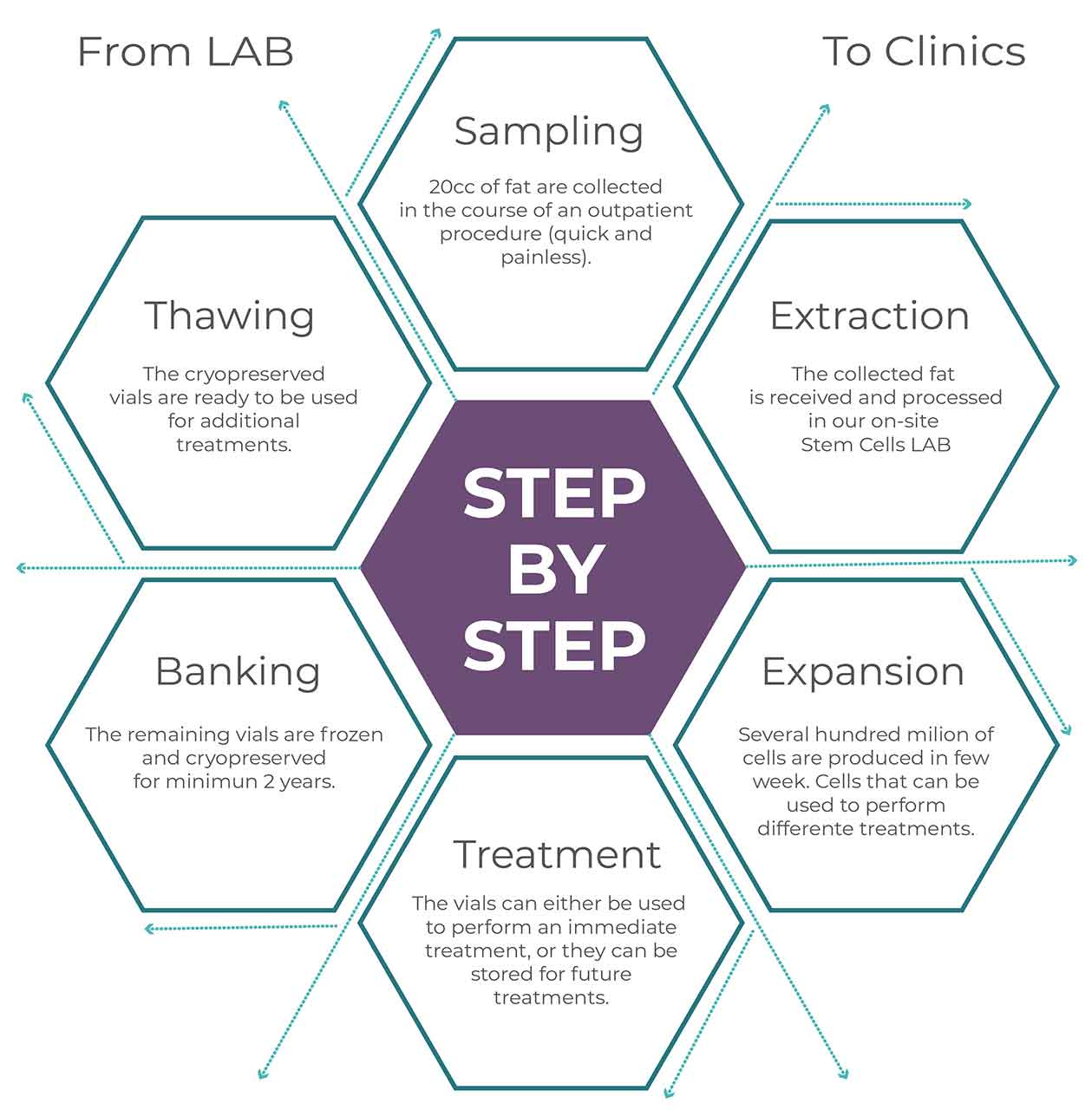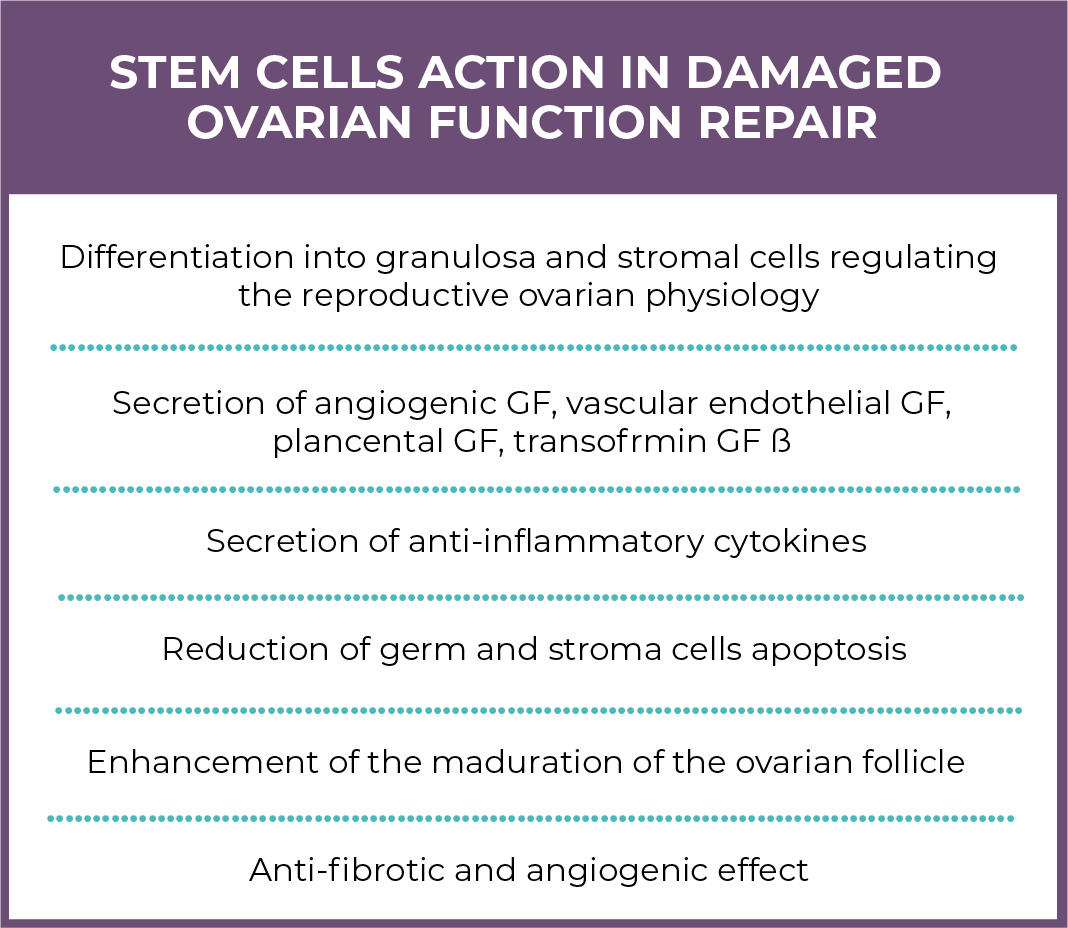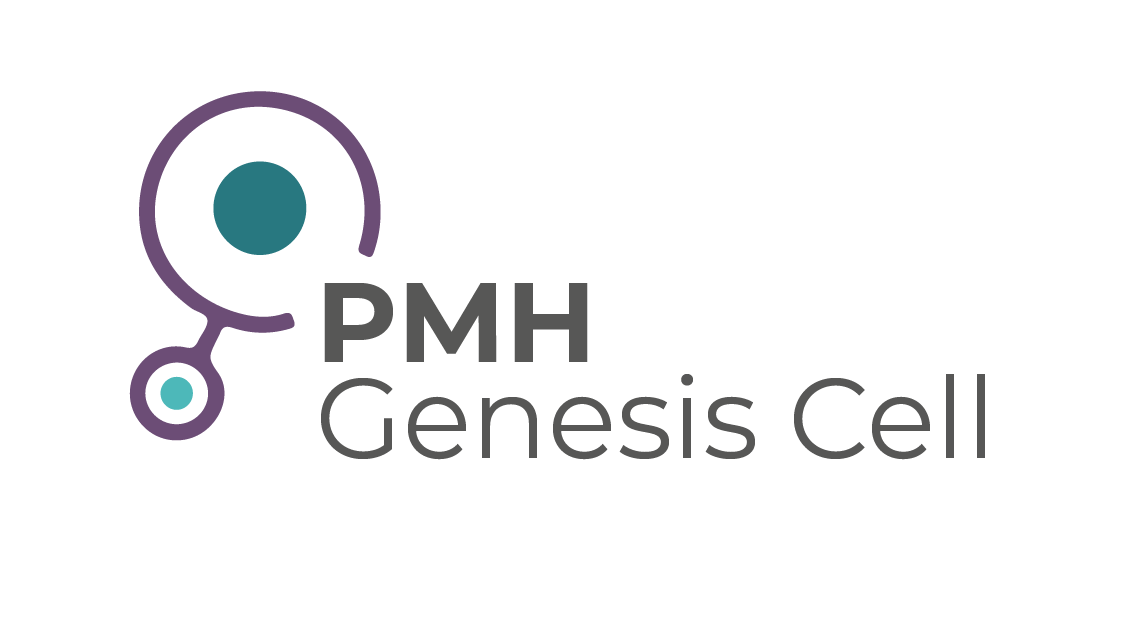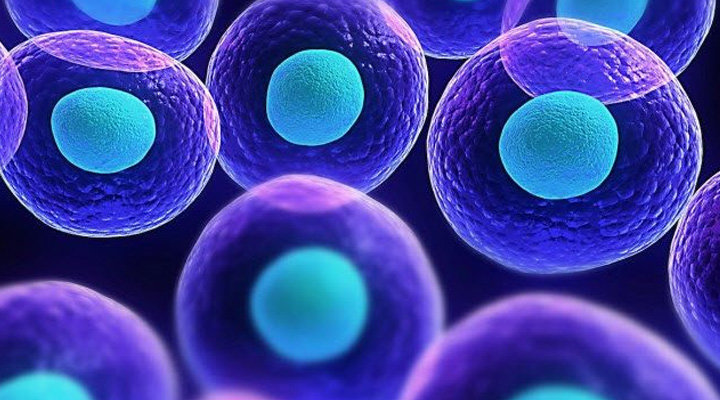Stem cell treatment restores ovarian function and leads to the production of immature oocytes.
Pre-clinical studies conduced on animal models have being helping highlight the mechanisms underlying mesenchymal stem cell therapy.
After homing to damaged tissues, mesenchymal stem cells closely interact with local stimuli (for example inflammatory molecules) that promotes the production of large amounts of growth factors by mesenchymal stem cells (for example, vascular endothelial growth factor), stimulating tissue regeneration.
Angiogenesis plays an important role in ovarian recovery. Moreover, mesenchymal stem cells reduce germ cell and stroma cell apoptosis, enhance the maturation of the ovarian follicle through microenvironmental improvements, and seem to exert an antifibrotic effect, inhibiting fibroblasts proliferation and decreasing extracellular matrix deposition.
The results of these actions are improved sex hormones (follicle-stimulating and estradiol) levels, ovarian weight, follicle count, and number of pregnancies. Stem cell treatment restores ovarian function and leads to the production of immature oocytes.


In women, ultrasounds demonstrated that mesenchymal stem cell treatment improved both ovarian size and endometrial thickness of patient with premature ovarian failure. Moreover, blood flow analysis demonstrated a richer signal in the endometrium.
Based on these results, stem cell therapy is a candidate effective method for the resumption of ovarian function. The proposed model for stem cells action in damaged ovarian function repair include:
- stem cell migration into ovarian tissue and differentiation into granulosa cells that regulate reproductive ovarian physiology;
- secretion of angiogenic growth factors by stem cells migrated to the ovarian tissue;
- effective reduction of inflammation (particularly, chemotherapy-induced inflammatory reaction).

